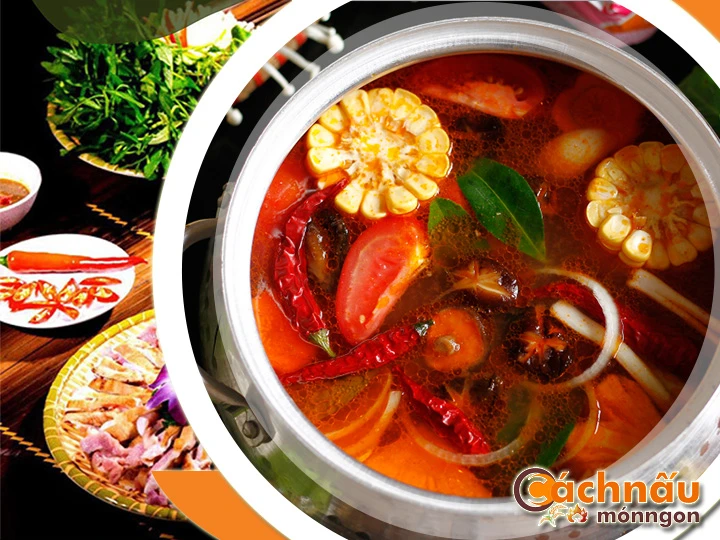Discover the Best Rabbit Hot Pot Tips for Beginners - Lẩu thỏ
Discover the Best Rabbit Hot Pot Tips for Beginners - Lẩu thỏ
Blog Article
Rabbit hot pot, a scrumptious and culturally rich dish, has been prized across different food cultures for centuries.
This comprehensive guide explores the sum of all parts you need to comprehend about rabbit hot pot, from its traditional beginnings to current adaptations, health advantages, and easy-to-follow steps for creating the ultimate plate at home. Whether you are a seasoned chef or a novice cook, this guide will inspire and equip you to perfect the skill of rabbit hot pot.

A LEGACY ALONG WITH CUSTOMS CENTERED AROUND RABBIT STEW.
Rabbit hot pot is a special and heritage-rich dish with significant traditions in various regions. Its appeal stems not only from its rich flavor but also from its historical and cultural significance.
1. The Origins about Rabbit-inspired delicacy.
- The Start: Rabbit casserole originated in villages where these animals were a common, wholesome food source. In China’s past, it was a household staple, particularly during cultural gatherings.
- Adopted in Various Places: In the West like Belgium, rabbit was known for being part of braises, evolving into modern versions of contemporary hot pots as the dish spread across cultures.
2. Rabbit Hot Pot influencing Cultural Practices of East Asia.
- China: Known as the traditional rabbit hot pot, rabbit hot pot is celebrated in Sichuan-style cooking, recognized for its pungent flavors and frequently prepared for festive occasions.
- Throughout Korea and Japan: While less prevalent, rabbit hot pot is sometimes made as a herbal dish in South Korea, or inspired by Japanese hot pot traditions in the Japanese archipelago, including local seasonal crops and spices.
- Within Vietnam: Although rabbit hot pot is uncommon in everyday meals, it is celebrated during noteworthy gatherings or in remote locations where rabbit meat is commonly found. It is often prepared with distinctive spices such as aromatic lemongrass, ginger, and hot chili, paired with fresh vegetables like kangkong, mustard leaves, or mimosa vegetables. This dish is enjoyed for its one-of-a-kind flavor and high nutritional value, frequently relished at special moments with close ones.
Tại Việt Nam, tuy không phổ biến là món ăn quen thuộc thường nhật, nhưng được yêu thích trong những ngày lễ lớn hoặc ở những nơi hẻo lánh, nơi dễ dàng tìm thấy thỏ. Thường được phối trộn cùng mùi thơm từ sả, gừng, và ớt tươi, kết hợp với rau sống khác. Món ăn này rất được ưa chuộng nhờ hương vị độc đáo và lợi ích sức khỏe, thường là món ăn chính trong.
3. Rabbit Casserole embedded in European Cuisine.
- France: Widely known as a flavorful dish with red wine sauce, aromatic herbs including rosemary, and seasonal roots. Rabbit hot pot is a culinary staple for special celebrations.
- Across Italy: The dish referred to as “Cacciatore”, featuring rabbit stewed in tomato and wine sauce, is a precursor to hot pot-style rabbit dishes.
MASTERING RABBIT HOT POT: RECIPES AND METHODS
Rabbit hot pot is a versatile dish that merges fresh ingredients, savory broths, and unique cooking techniques to create a hearty and delicious feast. Below are key steps into the key recipes and methods to excel in rabbit hot pot.
Essential Recipe for Rabbit Hot Pot
* Required Ingredients:
- 1 whole rabbit (sectioned)
- 4 cups of broth (chicken)
- Vegetables (potatoes)
- Spices and herbs (thyme)
- Seasonings (chili paste)
- Optional: bí quyết lẩu thỏ rice for serving
* Steps:
- Prepare the Rabbit: Rinse and cut the rabbit into pieces. Season with salt, black pepper, and a splash of soy sauce for 30 minutes to enrich the flavor.
- Create the Broth: Heat a pot with a bit of oil. Cook garlic and ginger until golden. Add your preferred broth and bring it to a light boil.
- Simmer the Rabbit: Add the rabbit pieces into the pot and let them simmer on low heat for 30-40 minutes until tender.
- Incorporate Vegetables: Add your chosen vegetables and cook until they are tender but still fresh-looking.
- Serve: Transfer the hot pot to a serving dish. Serve with dipping sauces and extras like rice or noodles.
Mastering Rabbit Hot Pot Techniques
- Marination:
. Marinate the rabbit with a combination of salt, pepper, and aromatics to amplify its natural flavor.
. For more depth, use cooking wine, soy sauce, or a mix of fragrant herbs.
- Layering Ingredients:
. Start by simmering the rabbit in the broth to draw out its rich flavor.
. Layer vegetables strategically based on their cooking times.
- Perfect Timing:
. Avoid cooking too long the rabbit, as it can lose tenderness.
. Test for doneness by checking if the meat is fork-tender.
- Taste Customization:
. Fine-tune the broth by adding extra herbs as needed.
. Experiment with different flavor profiles, such as spicy Sichuan-style variations.
Pro Tips for Rabbit Hot Pot
- Fresh Ingredients: Always choose fresh rabbit meat and seasonal vegetables for the highest quality.
- Taste and Adjust: Be attentive of the spiciness in the broth. Sample and adjust frequently during cooking.
- Creative Accompaniments: Offer a range of sauces like sesame paste or savory soy mixes to elevate the dining experience.
- Visual Appeal: Use a communal pot or serve the hot pot as a focal point to foster interaction.
By mastering these cooking techniques, you can prepare a rabbit hot pot that’s both flavorful and visually appealing, making it a highlight for any occasion or celebration. Report this page